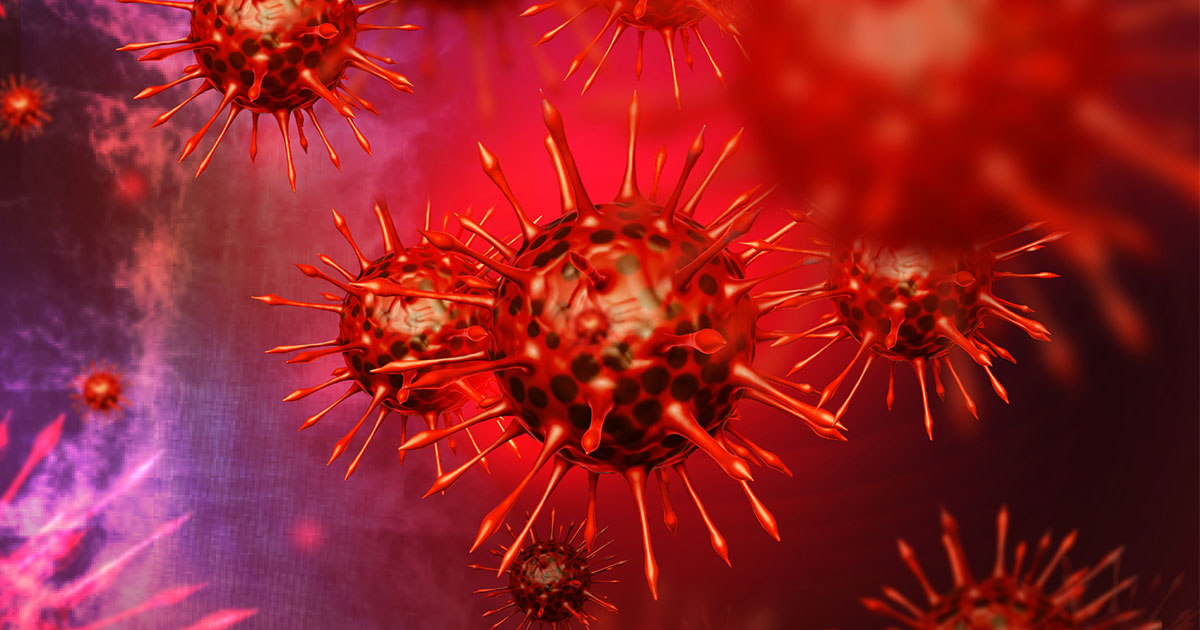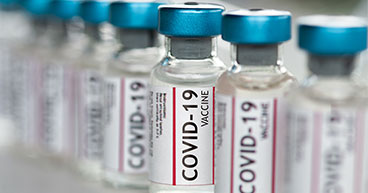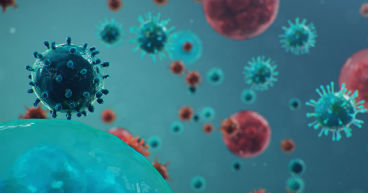
When the first COVID-19 vaccinations were administered in December 2020, experts hoped that would signal the beginning of the end of a pandemic that, by then, had killed more than 600,000 Americans. Travel restrictions, masks and lockdowns were destined to be but bad memories. And while the vaccines may not prevent infections, they were expected to ease severe illness and relieve the burden on the nation’s hospitals and health care workers.
It seems that relief has been short-lived. The coronavirus Delta variant has taken hold, causing a surge in new cases, hospitalizations and deaths across America.
For cancer patients and their caregivers, the rise in new COVID-19 cases requires them to continue to take extra steps to reduce their risk of exposure. At the same time, the U.S. Centers for Disease Control and Prevention (CDC) is now recommending a third vaccine shot for those with compromised immune systems, including cancer patients who:
- Are in active treatment for cancer, especially blood cancers, such as leukemia or lymphoma
- Have received a stem cell transplant in the last two years
- Are taking medication that may suppress the immune system
What’s changed?
COVID-19 cases peaked last winter at nearly 300,000 daily cases in early January, according to the CDC. As the vaccine became more widely available, daily cases fell dramatically to lows of less than 10,000 cases a day as spring turned to summer.
So why are we having a new surge of severe COVID-19 cases and hospitalizations? Unvaccinated Americans facing a new and more aggressive variant are the primary reasons for the flood of new cases.
The Delta variant
Viruses are extraordinarily persistent and adaptable. They thrive inside a living host and may mutate when the host fights back—either with a natural immune response or with the help of a vaccine. The coronavirus that caused the COVID-19 pandemic—dubbed the Alpha variant—has evolved as well. Variants caused surges in infections in several countries in Europe, South Africa, Brazil and elsewhere.
In December, around the same time vaccinations were approved, the Delta variant was discovered in India and elsewhere. Now it’s the dominant strain in the virus in the United States.
“There have been billions of copies of the virus created,” says Jeffrey Metts, MD, Chief of Staff at Cancer Treatment Centers of America® (CTCA), Atlanta. “So, it’s no surprise that we’ve seen a significant number of mutations. And the mutations that survive are the ones that are going to be most infectious. It’s also not a surprise that we’ll see something more contagious than the initial coronavirus that emerged at the beginning of the pandemic.”
While its cousin, Alpha, posed a significant threat to cancer patients and others with compromised immune systems, the Delta variant may pose even more of a risk, because:
It’s more aggressive and more transmissible than previous versions. Researchers believe the Delta variant is at least 60 percent more contagious than other coronaviruses.
It may cause more severe symptoms. According to the CDC, studies show that those infected with the Delta variant are more likely to be hospitalized than those infected with the Alpha version.
The Delta variant also has been shown to be more of a threat to young people. A study in England found that people under 50 were much more likely to experience more pronounced symptoms than they did with the Alpha virus.
“We’ve been very successful getting the 65 and older population vaccinated,” Dr. Metts says. “That’s very encouraging. But now, we’re seeing more young people, most of who are unvaccinated, occupying hospital beds.”
Vaccine hesitancy
As cases of the Delta variant spread across the country, so did the flood of misinformation about vaccines. Conspiracies theorized that the vaccines contained microchips, altering DNA and causing skin to become magnetic. Politicized debates over vaccine and mask mandates and the safety of the shots have added to the noise.
The reality: The conspiracies have been debunked, and the vaccines have been shown to be extremely safe.
Still, vaccine distribution plummeted over the summer as those who wanted them got them and others refused. As a result, only 51 percent of the eligible U.S. population is fully vaccinated. Vaccination rates in some counties in states where the virus is raging are as low as 25 percent.
“Some of the resistance is multi-factorial,” Dr. Metts says. “For some people, it infringes on their time or autonomy, and they don’t want to be told what to do. Some people have alert fatigue. Some people are misinformed or under-educated. Some people are highly educated and make a personal decision that they’re not going to get vaccinated. We see all of the above on a daily basis.”
Those unvaccinated are bearing the brunt of the Delta variant surge. While so-called breakthrough cases have occurred in thousands of patients who have been vaccinated, most of the hospitalizations and severe illnesses are among those who have not. In many states, at least 95 percent of COVID-19 patients in hospitals and up to 99 percent of those who have died had not been vaccinated.
The unvaccinated
Percentages of new cases, hospitalizations and deaths by those who aren’t fully vaccinated tell a stark tale:
| State | New Cases | Hospitalizations | Deaths |
|---|---|---|---|
| Alaska | 96 | 95 | 97.7 |
| Arkansas | 96.4 | 95.4 | 97.4 |
| California | 98.6 | 99.2 | 99.8 |
| Delaware | 99 | 99.4 | 98.7 |
| Indiana | 98.9 | 99.4 | 99 |
| Michigan | 98.4 | 98.7 | 97.3 |
| Montana | 96.8 | 97.7 | 96.9 |
| New Jersey | 99.8 | 99.9 | 99.9 |
| New Mexico | 98.9 | 99.7 | 99.7 |
| Oklanhoma | 99.2 | 99.3 | 99.6 |
Source: Kaiser Family Foundation, Johns Hopkins University
Note: States listed represent some of the highest and lowest percentages among those that reported numbers.
“There are those who believe the data is wrong,” Dr. Metts says. “We have to be mindful that there are sources that post anecdotal experiences that are not data-driven. So, our mission is to provide the most up-to-date information we can so people can make more informed decisions.”
What should cancer patients do?
Get vaccinated. Some patients in active treatment, and those with weakened immune systems, should talk to their doctor about when to get a vaccine and when it will be most effective.
Patients also should urge close family members, caregivers and other loved ones to get vaccinated.
“I certainly encourage people to think about their neighbors,” Dr. Metts says. “Think about the community and the aunts and uncles and the grandmothers and the grandfathers or the people who haven’t been able to get the vaccine or those who are immune-compromised. We try to inform people that their actions can have an impact on others.”
Other steps cancer patients, caregivers and family members can take to reduce their risk of exposure include:
- Wearing a mask while around others, and encouraging their family members and caregivers to wear them, too
- Avoiding large crowds whenever possible, and when not possible, keeping space between them and others
- Washing their hands frequently, or when washing isn’t practical, using hand sanitizer approved by the U.S. Environmental Protection Agency
- Avoiding people who are sick and staying home if they’re sick
- Keeping a clean home and disinfecting frequently touched areas and objects
“We know what the core fundamentals in fighting this virus are: social distancing, masking and the vaccine,” Dr. Metts says. “They really do drive the viral load across the country down.”
Learn why cancer survivors, not just active patients, are at high risk of COVID-19 symptoms.



